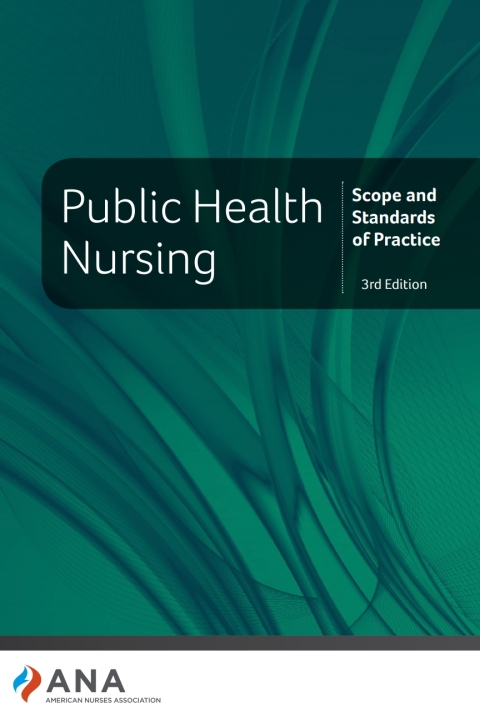Description
Efnisyfirlit
- Cover image
- Title page
- Table of Contents
- How to Use
- Copyright
- About the Authors
- ACKNOWLEDGMENTS
- Dedication
- CONTRIBUTORS
- CONTRIBUTOR BIOGRAPHIES
- Preface
- Part 1. The Relationship Between Public Health Nursing and Population Health
- 1. Public Health Foundations, Population Health, and Public Health Nursing
- INTRODUCTION
- PUBLIC HEALTH PRACTICE: THE FOUNDATION FOR HEALTHY POPULATIONS
- PUBLIC HEALTH NURSING AS A FIELD OF PRACTICE: AN AREA OF SPECIALIZATION
- CHALLENGES FOR THE FUTURE
- 2. History of Public and Community Health Nursing
- VALUING THE HISTORY OF PUBLIC HEALTH NURSING
- 1800S: PUBLIC HEALTH IN AMERICA AND ABROAD
- 1900S: ESTABLISHING THE PUBLIC HEALTH NURSING SPECIALTY
- PAYING THE BILL FOR PUBLIC HEALTH NURSES
- 1940s THROUGH 1060s
- 1970S INTO THE 21ST CENTURY
- 3. Public Health, Primary Care, and Primary Health Care Systems
- HEALTH CARE OVERVIEW
- FORCES STIMULATING CHANGE IN THE DEMAND FOR HEALTH CARE
- CURRENT HEALTH CARE SYSTEM IN THE UNITED STATES
- ORGANIZATION OF THE HEALTH CARE SYSTEM
- FORCES INFLUENCING CHANGES IN THE HEALTH CARE SYSTEM
- 4. Perspectives in Global Health Care
- Overview and Historical Perspective of Global Health
- The Role of Population Health
- Nursing and Global Health
- Major Global Health Organizations
- Global Development and Health Care Systems
- Major Global Health Problems and the Burden of Disease
- 5. Economics of Health Care Delivery
- THE CONTEXT OF THE US HEALTH CARE SYSTEM
- PRINCIPLES OF ECONOMICS—MICROECONOMICS AND MACROECONOMICS
- FACTORS INFLUENCING NATIONAL HEALTH CARE SPENDING
- Financing of Health Care
- FACTORS AFFECTING RESOURCE ALLOCATION AND RATIONING OF HEALTH CARE FROM AN ECONOMIC PERSPECTIVE
- Part 2. Factors Affecting Nurses in Public and Population Health
- 6. Health Equity and Population Vulnerability
- Defining Health Equity and Population Health
- Health Determinants
- Vulnerability
- Reducing Disparities and Improving Population Health Outcomes
- Assessing, Planning, and Implementing Care for Vulnerable Populations
- Chapter 6 Outline
- 7. Effects of the Environment on Population Health
- Introduction to Environmental Health
- Environmental Health Sciences
- Environmental Health Assessments
- Environmental Exposure by Media
- Risk Awareness and Risk Reduction
- Environmental Protection Standards, Policies, and Advocacy
- 8. Population-Centered Nursing in Rural and Urban Environments
- History and Definitions
- Rural Health Perspectives
- Nursing Care in Rural Environments
- Future Perspectives
- Building Professional-Community-Client Partnerships in Rural Settings
- 9. Application of Ethics in the Community
- ETHICS AND BIOETHICS: RELATIONSHIP TO NURSING AND PUBLIC HEALTH HISTORY
- ETHICAL DECISION-MAKING: PRINCIPLES AND THEORIES
- ETHICS AND THE CORE FUNCTIONS OF POPULATION-CENTERED NURSING PRACTICE
- CODES OF ETHICS AND ADVOCACY
- 10. Impact of Health Policy on Care Delivery
- INTRODUCTION TO POLICY
- THE GOVERNMENT’S ROLE IN POLICY MAKING
- HEALTH POLICY FRAMEWORKS
- GOVERNMENT HEALTH POLICY FUNCTIONS
- GOVERNMENT AGENCIES THAT INFLUENCE HEALTH
- NURSING AND THE POLICY PROCESS
- 11. Evidence-Based Practice
- Development of the Concept of Evidence-Based Practice
- Facilitators and Barriers to Evidence-Based Practice
- Evidence-Based Practice Process and Evidence
- Implementation Approaches and Considerations
- Example of Application of Evidence-Based Practice to Public Health Nursing
- Part 3. Conceptual and Scientific Frameworks Applied to Nursing Practice
- 12. Population-Based Public Health Nursing Practice: The Intervention Wheel
- THE INTERVENTION WHEEL: USE AND DEVELOPMENT
- ASSUMPTIONS UNDERLYING THE INTERVENTION WHEEL
- COMPONENTS OF THE MODEL
- ADOPTION OF THE INTERVENTION WHEEL
- APPLYING THE NURSING PROCESS IN PUBLIC HEALTH NURSING PRACTICE
- 13. Genomics in Public Health Nursing
- Introduction to Genomics
- Genomics and Screening for Risk of Cancer
- Current Issues in Genomics and Genetics
- Genomic Competencies for Nurses
- The Future
- 14. Epidemiology
- Introduction to Epidemiology
- Basic Concepts in Epidemiology
- Screening and Surveillance
- Basic Methods in Epidemiology
- Applications of Epidemiology
- 15. Infectious Disease Prevention and Control
- INTRODUCTION TO INFECTIOUS DISEASE
- TRANSMISSION OF COMMUNICABLE DISEASES
- Surveillance of Communicable Diseases
- EMERGING AND ONGOING POPULATION-LEVEL INFECTIOUS DISEASES
- PREVENTION AND CONTROL OF INFECTIOUS DISEASE
- TYPES OF INFECTIOUS DISEASES
- 16. Communicable and Infectious Disease Risks
- HUMAN IMMUNODEFICIENCY VIRUS INFECTION
- SEXUALLY TRANSMITTED DISEASES
- HEPATITIS
- TUBERCULOSIS
- NURSE’S ROLE IN PROVIDING PREVENTIVE CARE FOR COMMUNICABLE DISEASES
- Part 4. Population Level Interventions
- 17. Partnerships for Population Health Care Interventions
- Community Partnerships and Population Health
- Nursing, Community Partnerships and Health Equity for Population Health
- Tools for Building Effective Community Partnerships
- 18. Promoting Healthy Populations
- History and Definitions
- Healthy Communities in the United States and Globally
- Developing a Healthy Community
- 19. Assessment and Analysis of Client Populations
- INTRODUCTION TO COMMUNITY ASSESSMENT
- COMMUNITY AS CLIENT
- COMMUNITY ASSESSMENT
- HOW TO CONDUCT A COMMUNITY ASSESSMENT
- 20. Building a Culture of Health to Influence Health Equity Within Populations
- ROBERT WOOD JOHNSON FOUNDATION CULTURE OF HEALTH
- DEFINITIONS AND HISTORICAL PERSPECTIVES
- HEALTH PROMOTION MODELS AND FRAMEWORKS
- THE ECOLOGICAL APPROACH TO HEALTH PROMOTION AND HEALTH EQUITY
- INTERPROFESSIONAL APPLICATION TO NURSING AND PUBLIC HEALTH
- Part 5. Planning Approaches to Population Health Care Delivery
- 21. The Nurse-Led Health Center: A Model for Community Nursing Practice
- OVERVIEW
- Nurse-Led Models of Care
- THE TEAM OF A NURSE-LED CENTER
- STARTING A NURSE-LED CLINIC
- EVALUATING AND SUSTAINING A NURSE-LED HEALTH CENTER
- 22. Public Health Nursing Practice and the Disaster Management Cycle
- DEFINING DISASTERS
- DISASTER FACTS
- NATIONAL DISASTER PLANNING AND RESPONSE: A HEALTH-FOCUSED OVERVIEW
- THE DISASTER MANAGEMENT CYCLE AND NURSING ROLE
- 23. Public Health Surveillance and Outbreak Investigation
- DISEASE SURVEILLANCE
- NOTIFIABLE DISEASES
- CASE DEFINITIONS
- TYPES OF SURVEILLANCE SYSTEMS
- THE INVESTIGATION
- 24. Program Management
- PROGRAM PLANNING OVERVIEW
- ASSESSMENT OF NEED
- PLANNING PROCESS
- PROGRAM EVALUATION
- ADVANCED PLANNING METHODS AND EVALUATION MODELS
- PROGRAM FUNDING
- 25. Health Care Improvement in the Community
- Health Care Performance Improvement in the United States
- Health Care Quality and Nursing Practice
- Definitions, Goals, and Approaches
- Quality Improvement in Public Health
- Key Steps in the Health Care Improvement Process
- 26. Management of Populations
- POPULATION HEALTH
- NURSING AND POPULATION HEALTH
- EXEMPLARS OF POPULATION HEALTH AND POPULATION HEALTH MANAGEMENT (PHM)
- Part 6. Promoting the Health of Target Populations Across the Life Span
- 27. Working With Family Populations With Health Risks for Healthy Outcomes
- Introduction to Families
- Four Approaches to Family Nursing
- Theories for Working With Families in the Community
- Family Health Risks
- Advocacy Through Policy
- 28. Maternal, Child, and Adolescent Populations
- OVERVIEW: MATERNAL, CHILD, AND ADOLESCENT POPULATIONS
- SDOH: APPLICATION TO MATERNAL, CHILD, AND ADOLESCENT POPULATIONS
- HEALTH OUTCOMES OF FOCUS: STRATEGIES FOR WELLNESS
- 29. Major Health Issues and Chronic Disease Management of Adults Across the Life Span
- Introduction to Adult Health Issues
- Adult Health Concerns
- Health Concerns by Sex
- Health Disparities Among Special Groups of Adults
- Community and Public Health Models
- Part 7. Issues in Promoting the Health of Vulnerable Populations
- 30. The Homeless and Populations in Poverty
- OVERVIEW ON POVERTY
- THE CHANGING DEMOGRAPHICS AND CONTRIBUTORS TO POVERTY
- POVERTY AND HEALTH: THE IMPACT OF TOXIC STRESS
- DEFINING AND UNDERSTANDING THE CONCEPT OF HOMELESSNESS
- IMPACT OF HOMELESSNESS ON HEALTH ACROSS THE LIFE SPAN
- UNIQUE ROLE OF THE NURSE
- 31. Immigrant and Migrant Health Issues
- INTRODUCTION
- DEFINITIONS AND STATISTICS
- PERTINENT ISSUES
- HEALTH
- CARING FOR IMMIGRANT, REFUGEE, AND MIGRANT POPULATIONS
- 32. Mental Health Issues
- A MENTAL HEALTH CRISIS: CRITICAL FACTORS COMPOUNDING THE CRISIS
- SCOPE OF MENTAL ILLNESSES IN THE UNITED STATES
- Systems and Evolution of Community Mental Health Care
- ROLE OF THE NURSE IN COMMUNITY MENTAL HEALTH
- CURRENT AND FUTURE PERSPECTIVES IN MENTAL HEALTH CARE
- NATIONAL OBJECTIVES FOR MENTAL HEALTH SERVICES
- 33. Alcohol, Tobacco, and Other Drug Problems
- ALCOHOL, TOBACCO, AND OTHER DRUG PROBLEMS IN PERSPECTIVE
- PSYCHOACTIVE DRUGS
- PREDISPOSING/CONTRIBUTING FACTORS
- PRIMARY, SECONDARY, AND TERTIARY PREVENTION AND THE ROLE OF THE NURSE
- OUTCOMES
- 34. Violence and Human Abuse
- Social and Community Factors Influencing Violence
- Violence Against Individuals or Oneself
- Family Violence and Abuse
- Nursing Interventions
- Part 8. Nurses’ Roles and Functions Working With Populations
- 35. Advanced Nursing Practice in the Community
- Introduction
- Advanced Practice Roles
- Arenas for Practice
- Issues and Concerns
- 36. The Nurse Leader in Population Health
- THE NEED FOR NURSE LEADERS
- THEORIES OF LEADERSHIP AND MANAGEMENT
- ROLES AND CONSULTATION
- COMPETENCIES FOR NURSE LEADERS
- FUTURE OF NURSING LEADERSHIP
- 37. The Nurse in the Schools
- School Nursing is Population Health
- Culture of Health and Schools
- Health Impact Pyramid and School Nursing Interventions
- Maximizing the Investment in School Nurses for Population Health
- 38. The Nurse in Occupational Health
- Overview
- Workers as A Population Aggregate
- Application of the Epidemiologic Model
- Promoting Worker Health and Safety
- 39. Forensic Nursing in the Community
- Perspectives on Forensics and Forensic Nursing
- Forensic Nursing as a Specialty Area That Provides Care in the Community
- Development and Preparation for Forensic Nursing
- Current Perspectives
- COMMUNITY PERSPECTIVES
- 40. The Nurse in Faith Populations
- OVERVIEW
- DEFINING THE PRACTICE OF FAITH COMMUNITY NURSING
- FAITH COMMUNITY NURSING MODELS AND INTERVENTIONS
- ISSUES IN FAITH COMMUNITY NURSING PRACTICE
- MODELS OF FAITH COMMUNITY NURSING
- 41. Public Health Nursing at Local, State, and National Levels
- ROLES OF LOCAL, STATE, AND FEDERAL PUBLIC HEALTH AGENCIES
- History and Trends in Public Health
- SCOPE, STANDARDS, AND ROLES OF PUBLIC HEALTH NURSING
- MODELS OF PUBLIC HEALTH NURSING PRACTICE
- FUNCTIONS OF PUBLIC HEALTH NURSES
- Appendixes
- Appendix A. Program Planning and Design
- Appendix B. Flu Pandemics
- Appendix C. Friedman Family Assessment Model (Short Form)
- Appendix D. Comprehensive Occupational and Environmental Health History
- Appendix E. Essential Elements of Public Health Nursing
- Appendix F. American Public Health Association Definition of Public Health Nursing
- Appendix G. The Health Insurance Portability and Accountability Act (HIPAA): What Does It Mean for Public Health Nurses?
- INDEX
- Healthy People 2030







Reviews
There are no reviews yet.